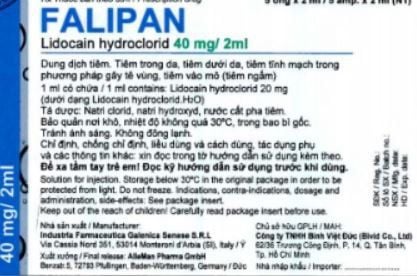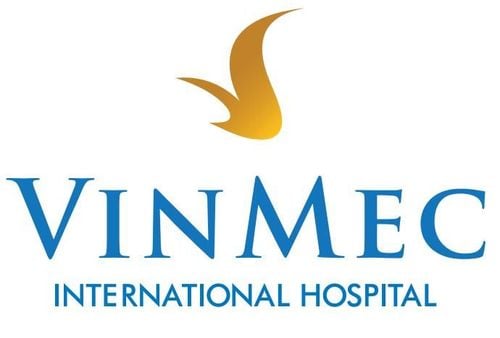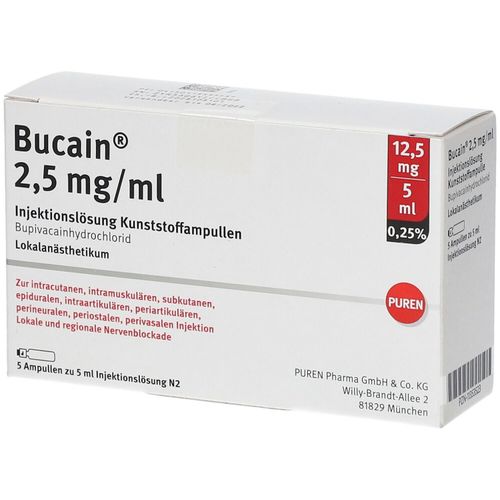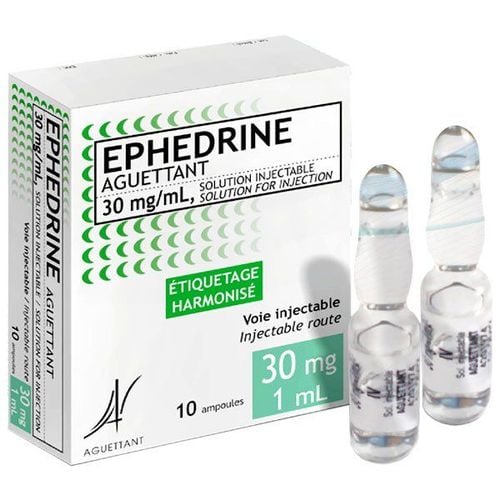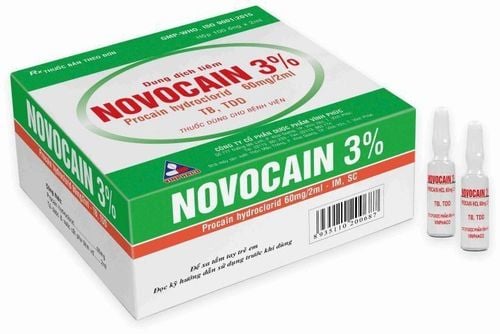This is an automatically translated article.
The article was consulted with an Anesthesiologist - General Surgery Department - Vinmec Nha Trang International General Hospital.Spinal anesthesia is a regional anesthetic technique where local anesthetic is injected into the subarachnoid space. The purpose is to temporarily inhibit nerve conduction through the spinal cord, thereby meeting the requirements of anesthesia in knee ligament rupture surgery and pain relief.
1. Knee ligament rupture
1.1. Knee ligament injury
Knee ligament rupture injuries include many forms such as:Anterior cruciate ligament rupture; Posterior cruciate ligament rupture; Lateral ligament rupture; Meniscus damage... Knee ligament tears often appear after an injury, causing the knee joint to become swollen, red, and painful for a few weeks, then gradually subside. There are some cases where the anterior cruciate ligament is broken and can still walk normally, but every time the knee is active, the knee joint becomes painful and swollen.
1.2. Indications for treatment
Not every case of injury in this area requires surgical intervention to rupture the ligament of the knee joint. Depending on the condition of the injury as well as the type of ligament damaged, the age of the victim and the need for movement..., an orthopedic specialist will make appropriate indications.Knee ligament rupture surgery is usually indicated in the following cases:
Patient has a knee injury, has been examined and diagnosed with a torn knee ligament accompanied by a meniscus injury, or a multi-ligament rupture simultaneously with the posterior cruciate ligament; The patient has suffered a knee injury before, after examination, the doctor diagnosed a torn cruciate ligament causing the knee to loosen; Patient is young, tendon function is relatively good.
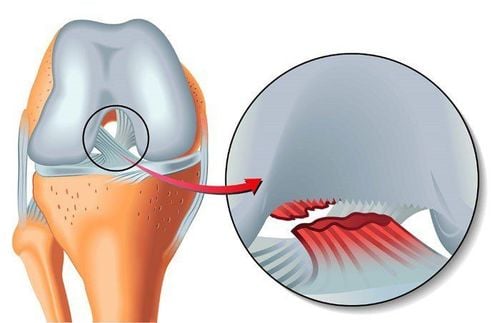
Bệnh nhân có tiền sử chấn thương dây chằng gối được chỉ định phẫu thuật
1.3. Knee ligament rupture surgery
A specialist doctor will perform surgery on the cruciate ligament of the knee in the following order of steps:Anesthesiologist will administer spinal anesthesia or general anesthesia and other regional anesthetic techniques to reduce pain. postoperative pain if possible. The patient lies supine with the knee flexed at 90 degrees, the thigh resting on the support device and the foot resting on the support; Arthroscopic knee surgery to check and evaluate the injury; Carry out surgical methods and techniques for ligament rupture of the knee joint; Sew the incision and fix the extensor knee with a brace; Suture removal about 2 weeks after surgery.
2. When is spinal anesthesia required?
Similar to other anesthetic and anesthetic modalities, spinal anesthesia for knee ligament rupture is relatively widely indicated for intraoperative anesthesia and postoperative analgesia. Contraindicated in case:Patient refuses to perform; Allergy to anesthetic; The area of the needle puncture is infected; Lack of adequate circulating volume, shock; Severe coagulopathy; Treatment with anticoagulants is not enough time; Constricted mitral stenosis and constricted aortic valve; Increased intracranial pressure.
3. Preparation steps
3.1. Executor
The technique of spinal anesthesia for dissection of the knee ligament will be performed by an anesthesiologist and coordinated and assisted by a specialist anesthesiologist.3.2. First aid and monitoring equipment
Resuscitation: Oxygen source, Ambu balloon, mask, endotracheal intubation equipment, anesthesia machine with breathing, electric shock, suction machine... Circulatory resuscitation drugs: Infusion, ephedrine, adrenaline... Anticonvulsants convulsions, poisoning: Belongs to barbituric, benzodiazepine, muscle relaxant, intralipid 20%... Routine monitoring: Electrocardiogram, blood pressure measurement, oxygen saturation, breathing rate...3.3. Anesthesia and anesthetic equipment
Syringes and needles for spinal anesthesia of all sizes; Gloves, gauze, gauze and sterile dressings; Surgical forceps; Antiseptic solution Local anesthetic bupivacaine, levobupivacaine, ropivacaine... can be combined with drugs of the morphine family; Note that the dose of anesthetic is based on the weight, height and physical condition of the patient. Reduce dose by less than usual for adults over 60 years of age, with anemia and pregnant women.3.4. Patient
Have pre-anesthesia (pre-operative) examination before surgery; Explain the benefits, risks, complications, and procedures to cooperate with anesthesia; Wash with an antiseptic solution and clean the spinal cord area to be anesthetized; If necessary, sedation may be given the night before the surgery. In addition, the medical staff must also check the patient's medical records, necessary clinical and paraclinical examination results according to the general regulations of the Ministry of Health.4. Procedure
After checking the patient's records and fully examining the patient, the anesthesiology resuscitation team will conduct spinal anesthesia techniques according to the following steps:4.1. Prevention of hypotension
Insert an intravenous line and give fluids from 5 to 10 ml/kg in adults.4.2. Posture
Sitting position: The patient sits with his back arched, his head bowed so that his chin touches his chest, his legs are stretched out on the operating table or on the chair; ● Lying position: The patient lies on his side with his back bent, knees close to his stomach, chin resting on his chest.4.3. Performed by Doctor
Wear full protective gear:● Wear a hat;
● Wear a mask;
Wash your hands;
● Wear a surgical gown;
● Wear sterile gloves.
Then disinfect the needle puncture area 3 times with antiseptic solution, then cover with a sterile hole towel.
4.4. Spinal anesthesia technique
Midline: Puncture the space between 2 vertebrae, usually L3-L4 or L4-L5; Or Lateral line: Poke about 1-2cm from midline, directing needle into midline, up and forward; Point the bevel of the anesthetic needle parallel to the patient's spine; Needle puncture until loss of resistance due to transdural needles; When the cerebrospinal fluid is seen flowing out, turn the bevel of the needle towards the patient's head and inject the anesthetic.
Gây tê tủy sống cần được thực hiện ở các bệnh viện lớn
5. Follow up
● Vital signs: Sensation, heart rate, electrocardiogram, blood pressure and oxygen saturation index;● Assess the degree of sensory and motor blockade;
● Unintended side effects;
After the surgery is completed, the patient is transferred out of the recovery room to the inpatient room if the following criteria are met:
● No hemodynamic and respiratory disorders, no pain, no vomiting..
● Mobilize for full recovery;
Level of sensory block below the inguinal fold.
6. Complications and treatment
6.1. Drug-induced complications
● Allergies, anaphylaxis (uncommon with new generation anesthetics)Treat by stopping local anesthetic injection and applying the anti-anaphylactic regimen of the Ministry of Health.
Anesthesia poisoning
Due to the wrong injection of anesthetic into the blood vessels. Treatment: stop using anesthetics, anticonvulsants, emergency respiratory - circulatory resuscitation. In case of poisoning with local anesthetics bupivacaine and ropivacaine, an intralipid 20% infusion.
6.2. Accidents caused by technology
● Hypotension, bradycardia: Treat with vasoconstrictor ephedrine, adrenaline, atropin and fluid resuscitation;● Headache: Let the patient lie still, give enough fluids, combine pain relievers. If necessary, the dura mater will be patched with autologous blood (Blood Patch);
● Nausea and vomiting: Control blood pressure and take antiemetics;
● Urinary retention: Apply warmth, or catheterize the bladder if necessary;
● Complete spinal anesthesia: Respiratory - circulatory resuscitation emergency;
● Other complications: Consultation and exploration to identify lesions and appropriate management;
Anesthesia failed: Switch to anesthesia.
In summary, spinal anesthesia is indicated for anesthesia or analgesia for orthopedic surgery from the pelvis to the lower extremities, including surgery for ligament rupture of the knee joint. This method is widely applied today, but not every hospital can perform the procedure safely and in the best way, especially with spinal anesthesia to dissect knee ligaments. Therefore, you should go to specialized medical facilities to discuss before surgery.
Currently, Vinmec International General Hospital also uses ultrasound machines to support spinal anesthesia in surgery and treatment, helping to increase the success rate, increase safety and professionalism. .. Helps patients not feel pain and minimize complications compared to other methods of anesthesia and anesthesia. Especially with a system of modern and standard machinery, together with a team of qualified and experienced doctors and nurses, will bring the best results to customers.
Please dial HOTLINE for more information or register for an appointment HERE. Download MyVinmec app to make appointments faster and to manage your bookings easily.




